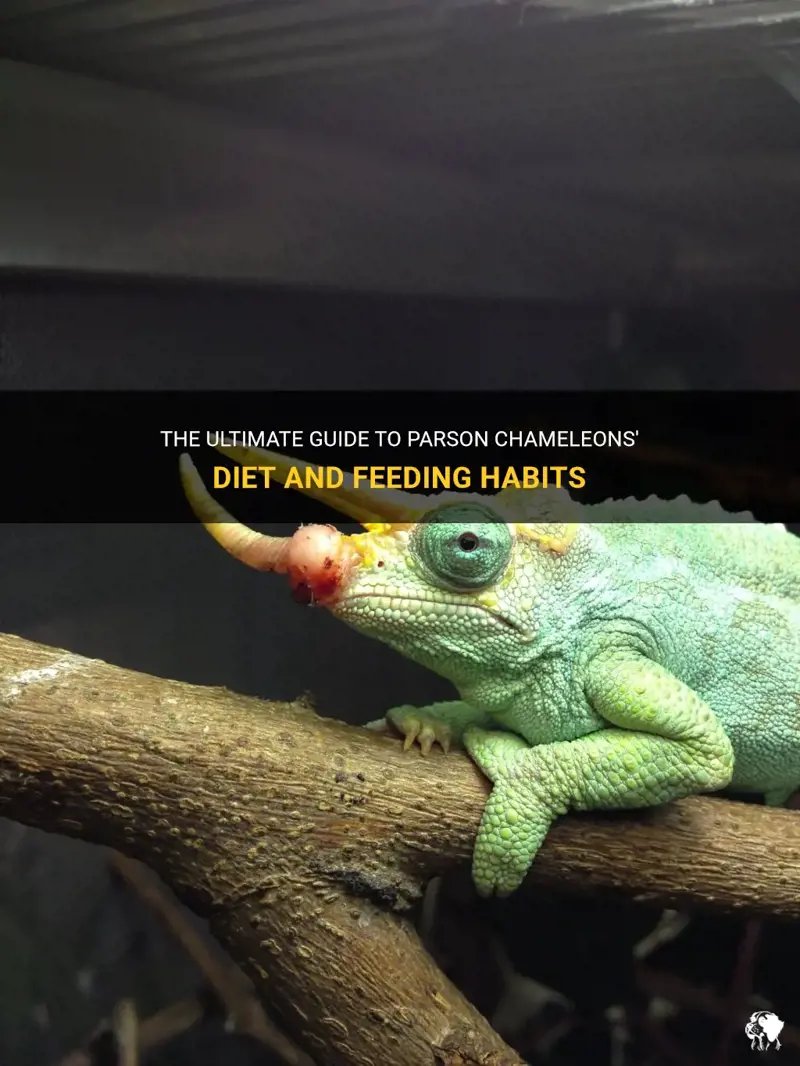
Parson’s chameleons are one of the largest chameleon species out there, native to Madagascar and known for their vibrant colors and impressive size. They’re not just beautiful; they require a balanced and varied diet to thrive. Ensuring they get the right nutrients is essential for their overall health, energy levels, and even those stunning color displays. So, if you’re a proud owner or thinking about becoming one, you’ll want to understand their dietary preferences inside and out.
Understanding the Diet of Parson’s Chameleons
First off, let’s break down what these beauties typically munch on. Parson’s chameleons are insectivores, which means they primarily feast on insects. In the wild, they hunt down a variety of bugs, and this diet is crucial for their growth and vitality. Imagine them as tiny, colorful hunters, waiting patiently for the perfect moment to catch their next meal.
Common insects they enjoy include:
- Crickets
- Mealworms
- Roaches
- Hornworms
- Waxworms
The key is to provide a mix of these options to keep their meals exciting and nutritious. Each type of insect brings different vitamins and minerals to the table, ensuring your chameleon gets a well-rounded diet.
Feeding Schedule for Parson’s Chameleons
You might be wondering how often you should feed your Parson’s chameleon. The feeding schedule can vary depending on their age and size. Young chameleons need more frequent meals to support their growth.
Here’s a simple guideline to follow:
- Hatchlings (0-3 months): Feed daily, offering 5-10 small insects.
- Juveniles (4-8 months): Feed every other day, providing 10-15 insects.
- Adults (over 8 months): Feed every 2-3 days, offering 15-20 insects.
Honestly, it’s important to observe your chameleon. If they seem active and their colors are vibrant, you’re likely on the right track. If they’re lethargic or losing weight, you may need to adjust the quantity or frequency of their meals.
Nutrition Needs: Vitamins and Supplements
Just like humans, chameleons require a balanced diet that doesn’t just consist of bugs. They need vitamins and minerals to prevent health issues. You might think of these supplements as the chameleon’s version of a multi-vitamin!
Key supplements include:
- Calcium: Essential for bone health; dust insects with calcium powder 2-3 times a week.
- Vitamin D3: Helps with calcium absorption; use a D3 supplement at least once a week.
- Multivitamins: Offer a balanced array of nutrients; use it sparingly, about once every two weeks.
Remember, too much of a good thing can be harmful. Make sure not to over-supplement, as it can cause health issues. It’s all about balance!
Hydration: The Overlooked Aspect
Now, let’s talk hydration. While you might think diet is the main component of your chameleon’s health, water is often neglected. Chameleons don’t drink water like dogs or cats; instead, they hydrate by licking droplets off leaves in their environment.
To ensure your Parson’s chameleon stays hydrated, consider:
- Using a misting system or misting by hand daily to simulate rain.
- Providing a shallow water dish, though many chameleons may not use it.
- Keeping the humidity levels in their enclosure between 40-70% to help with moisture retention.
This tiny detail can make a huge difference in their health, especially during hotter months.
Feeding Techniques: Making Mealtime Fun
Feeding time can be an engaging experience for both you and your chameleon! Here’s the thing: chameleons are natural hunters, so presenting food in a way that mimics their wild foraging can encourage their instincts.
Try these techniques:
- Feeding by hand: Offer insects on a long tweezer, which allows your chameleon to catch them as they would in the wild.
- Using a feeding station: Set up a small platform with insects scattered around it to encourage exploration.
- Live insects: Always opt for live food when possible to stimulate their hunting behavior.
Making meal times interactive not only helps with their physical health but also keeps their minds active.
Common Problems and Solutions
As a chameleon owner, you might run into some common feeding-related challenges. It’s essential to be aware of these issues so you can tackle them head-on. Let’s go through a few.
1. Refusing Food: If your chameleon isn’t eating, check for signs of stress, illness, or incorrect temperature in their habitat. Sometimes they just need a little environment adjustment.
2. Overfeeding: Overweight chameleons can face serious health issues. Monitor their weight and adjust their feeding schedule as needed. Remember, adult chameleons don’t need to be fed as often as younger ones.
3. Nutritional Deficiencies: Signs like lethargy or color dullness can indicate a lack of essential nutrients. Regularly mixing up their food and incorporating supplements can help.
Being attentive to these issues can make all the difference in ensuring a happy and healthy chameleon.
Feeding a Parson’s chameleon can feel like a big responsibility, but with a little knowledge and care, you can ensure they thrive. Remember that variety is your best friend—different insects, the right supplements, and keeping them hydrated are all part of the package.
By watching their behavior and adjusting their diet as needed, you can create a satisfying and nutritious menu for your colorful reptile companion. Happy feeding!

